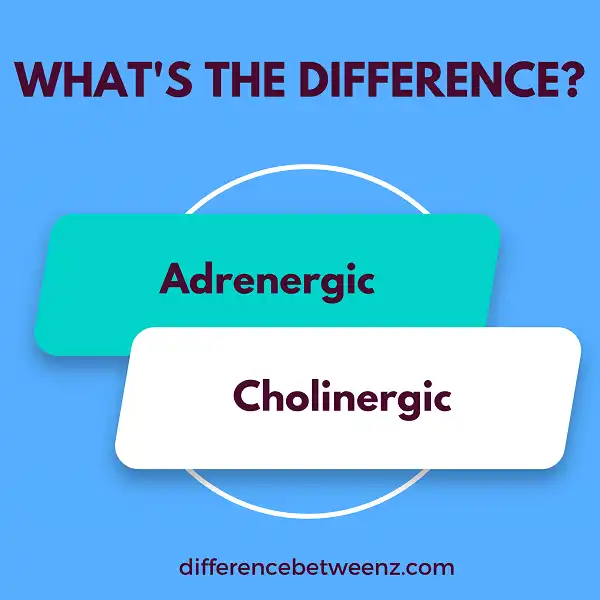There are two kinds of neurotransmitters that control the body’s muscle tone: adrenergic and cholinergic. Adrenergic neurotransmitters activate the sympathetic nervous system, while cholinergic neurotransmitters activate the parasympathetic nervous system. Each system has different effects on the body’s muscles. Understanding the difference between these systems can help you better manage your health.
What is Adrenergic?
Adrenergic pathway is a signaling pathway used by the sympathetic nervous system to mediate the fight-or-flight response. Adrenergic pathway is initiated when the body is exposed to a stressor, such as danger. This triggers the release of norepinephrine from adrenergic neurons. Norepinephrine binds to adrenergic receptors on target cells, which causes a cascade of events that results in the activation of the sympathetic nervous system. The sympathetic nervous system then increases heart rate, blood pressure, and respiration rate in preparation for responding to the stressor. Adrenergic pathway is important for mediating the body’s response to stressors, but it can also be detrimental if it is constantly activated, as this can lead to stress-related diseases such as hypertension and anxiety disorders.
What is Cholinergic?
Cholinergic pathway is the process by which nerve cells release a chemical called acetylcholine. This chemical travels from the nerve cell to the muscle cell, and binds to receptors on the cell surface. This binding triggers a series of events that cause the muscle cell to contract. Cholinergic pathway is used in a variety of ways, including in the control of movement, heartbeat, and breathing. In addition, this pathway plays an important role in memory and learning. Cholinergic pathway is controlled by both genes and environment. Mutations in genes that control this pathway can lead to a variety of disorders, including Alzheimer’s disease and Parkinson’s disease.
Difference between Adrenergic and Cholinergic
Adrenergic neurotransmitters are those that stimulate the sympathetic nervous system, while cholinergic neurotransmitters stimulate the parasympathetic nervous system. Adrenergic neurotransmitters such as epinephrine and norepinephrine increase heart rate and blood pressure, while cholinergic neurotransmitters such as acetylcholine decrease heart rate and blood pressure. Adrenergic neurotransmitters are also responsible for the “fight-or-flight” response, while cholinergic neurotransmitters are responsible for the “rest-and-digest” response. In general, adrenergic neurotransmitters are more active during times of stress, while cholinergic neurotransmitters are more active during times of rest.
Conclusion
Adrenergic and cholinergic neurotransmitters are two of the most important types of neurotransmitters in the human body. They play a major role in many different physiological processes, including heart rate, digestion, and respiration. Understanding the difference between these two types of neurotransmitters is essential for anyone who wants to learn more about how the human body works.


